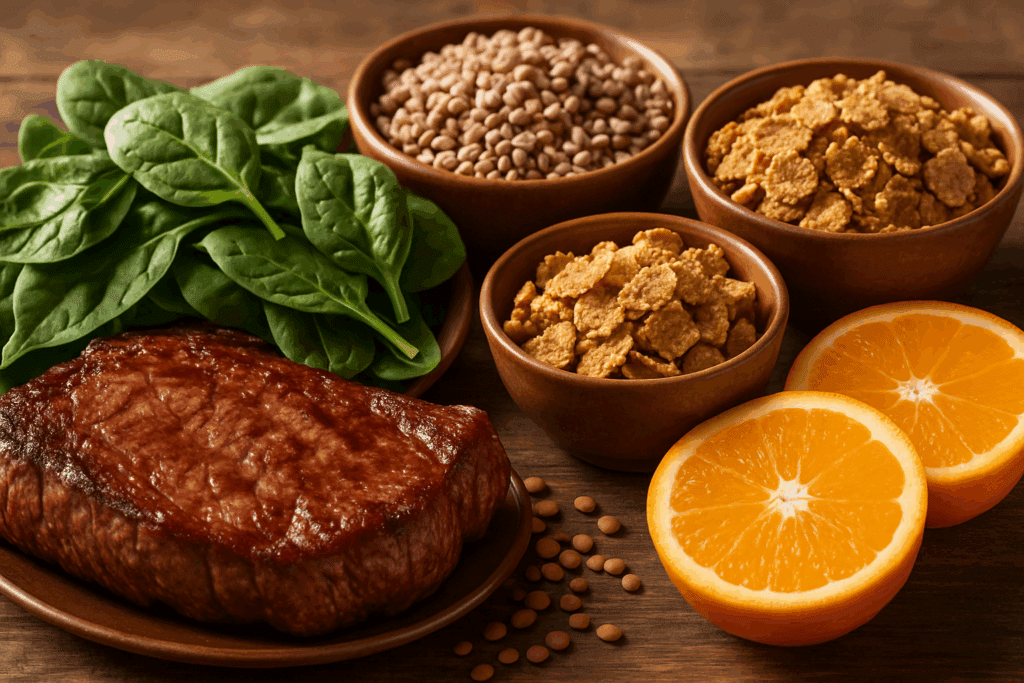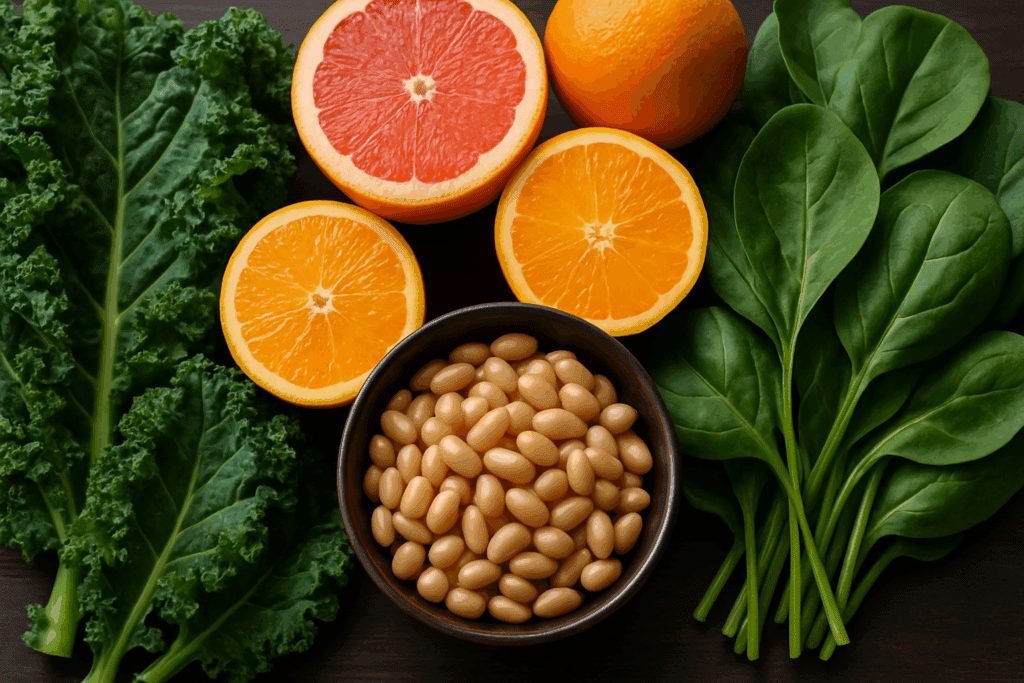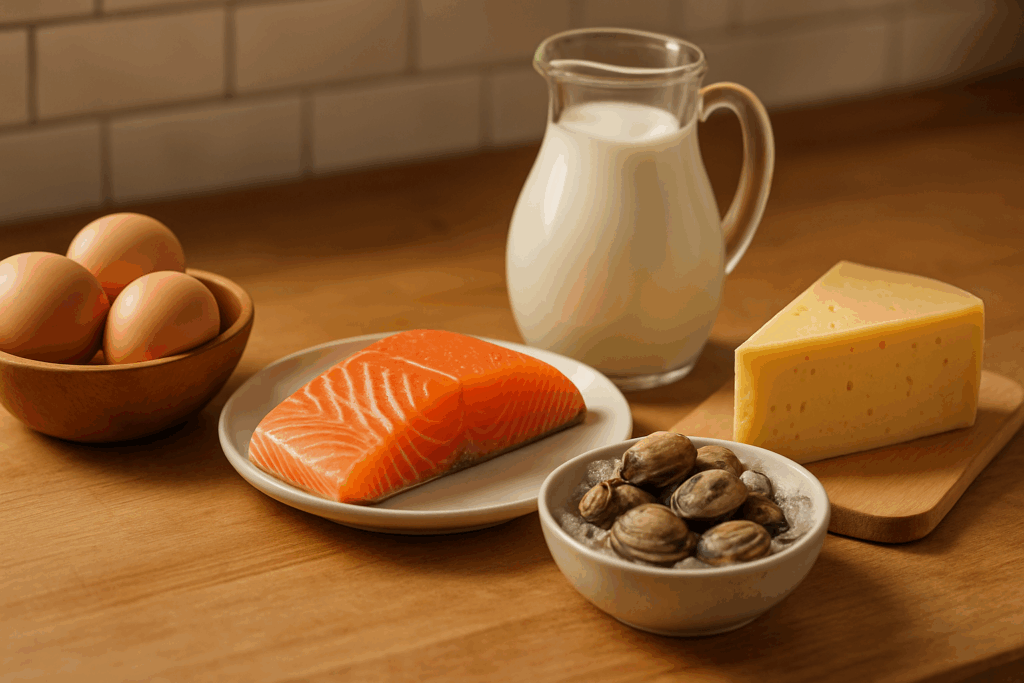Why Understanding Nutritional Anemia Matters More Than Ever
Anemia is more than just a feeling of tiredness—it is a clinical condition that significantly affects overall health and wellbeing. Among the many types of anemia, nutritional anemia stands out as one of the most common and preventable. The question “what nutrient is anemia related to?” opens the door to a deeper understanding of how diet influences blood health. This condition is not merely the result of one missing nutrient but rather a spectrum of possible deficiencies that interfere with red blood cell production and function.
You may also like: Macronutrients vs Micronutrients: What the Simple Definition of Macronutrients Reveals About Your Diet and Health
From iron to folate to vitamin B12, a wide range of nutrients play integral roles in supporting healthy blood. When these nutrients are lacking, whether due to poor diet, absorption issues, or chronic disease, the result can be reduced oxygen transport, fatigue, cognitive impairment, and a decreased ability to fight infection. Understanding nutritional anemia not only helps identify the root causes but also offers a pathway to prevention and recovery through strategic dietary choices and medical support.

The Role of Iron: The Most Well-Known Nutrient Related to Anemia
When asking what nutrient is anemia related to, iron is usually the first to come to mind—and for good reason. Iron is a central component of hemoglobin, the protein in red blood cells responsible for transporting oxygen throughout the body. Without sufficient iron, red blood cells become small and pale, unable to carry adequate oxygen, leading to symptoms like fatigue, dizziness, and shortness of breath.
Iron-deficiency anemia is particularly prevalent among menstruating women, pregnant individuals, children, and those with chronic illnesses. Iron exists in two dietary forms: heme iron, found in animal-based foods like red meat, poultry, and fish; and non-heme iron, found in plant-based foods such as lentils, spinach, and fortified cereals. Heme iron is more bioavailable, meaning it’s more efficiently absorbed by the body. Non-heme iron, on the other hand, benefits from being consumed with vitamin C-rich foods like oranges or tomatoes to enhance absorption.
Common causes of iron deficiency include inadequate dietary intake, chronic blood loss (often from menstruation or gastrointestinal bleeding), and malabsorption disorders such as celiac disease. For vegetarians and vegans, who rely solely on non-heme iron sources, careful meal planning becomes essential to meet daily needs and prevent nutritional anemia.

Folate: Essential for Cell Division and Red Blood Cell Formation
Folate, also known as vitamin B9, is another critical nutrient tied closely to nutritional anemia. It is vital for DNA synthesis and cell division, both of which are crucial processes in the production of healthy red blood cells. Folate-deficiency anemia, often categorized under the broader term megaloblastic anemia, is marked by the presence of abnormally large red blood cells that cannot function properly.
This type of anemia is especially dangerous during pregnancy, as folate deficiency not only increases the risk of anemia in the mother but also contributes to serious birth defects in the developing fetus, such as spina bifida. The body’s demand for folate increases during times of rapid growth and development, making it essential for pregnant individuals to consume adequate amounts through diet or supplements.
Sources of dietary folate include dark leafy greens, citrus fruits, beans, and fortified cereals. However, conditions such as alcoholism, certain medications, and gastrointestinal disorders can impair folate absorption, increasing the risk of deficiency. Recognizing these risk factors early on allows for appropriate interventions to prevent nutritional anemia from developing or worsening.

Vitamin B12: The Hidden Culprit in Megaloblastic Anemia
Vitamin B12, or cobalamin, is another nutrient that plays a vital role in the formation and maturation of red blood cells. Like folate, B12 supports DNA synthesis, and a deficiency can also lead to megaloblastic anemia. However, B12 deficiency is often more insidious, developing slowly and sometimes presenting with neurological symptoms such as numbness, tingling, and memory loss.
Unlike iron and folate, which are found in both plant and animal foods, vitamin B12 is naturally present almost exclusively in animal-derived products such as meat, fish, eggs, and dairy. This makes vegans, older adults with declining stomach acid, and individuals with pernicious anemia particularly vulnerable to B12 deficiency. Pernicious anemia is an autoimmune condition in which the body cannot produce intrinsic factor, a substance needed to absorb B12 in the gut.
For individuals who cannot obtain sufficient vitamin B12 through diet alone, fortified foods and supplements are often necessary. In cases of severe deficiency or malabsorption, intramuscular injections of B12 may be required to restore adequate levels and reverse the symptoms of nutritional anemia.

The Overlooked Roles of Vitamin A, Copper, and Protein in Anemia
While iron, folate, and B12 are the most commonly discussed nutrients related to anemia, other nutrients such as vitamin A, copper, and protein also play essential roles in hematological health. Nutritional anemia can result from deficiencies in these nutrients as well, particularly when they disrupt iron metabolism or red blood cell production.
Vitamin A supports the mobilization of iron from stores in the body and helps in the production of hemoglobin. Deficiency in vitamin A can exacerbate existing iron-deficiency anemia and impair the immune response. Found in foods like liver, dairy products, and orange or yellow fruits and vegetables, vitamin A is crucial not just for vision and immunity but also for maintaining healthy blood.
Copper is necessary for iron transport and the proper function of enzymes involved in red blood cell development. It enables the body to convert iron into its usable form and integrate it into hemoglobin. Without adequate copper, iron may accumulate in the liver but fail to be utilized effectively, resulting in an anemia that mimics iron deficiency.
Protein, often underestimated in discussions about anemia, is necessary for the construction of hemoglobin and the enzymes required for red blood cell synthesis. In cases of protein-energy malnutrition, such as those seen in food-insecure regions, anemia may arise not from a lack of iron or vitamins, but from insufficient protein intake.
Populations at Greater Risk and the Influence of Social Determinants
The impact of nutritional anemia extends far beyond nutrient deficiencies alone. Populations at higher risk include pregnant individuals, infants, adolescents undergoing growth spurts, older adults, and those experiencing poverty, food insecurity, or chronic illness. In many low-income regions, diets rely heavily on staple crops like rice or maize, which are low in iron, folate, and other essential nutrients.
Public health strategies must address these social determinants of health to effectively combat anemia. This includes fortifying staple foods with essential nutrients, improving access to diverse and affordable food, and integrating nutrition education into community programs. Addressing barriers such as cultural food practices, limited healthcare access, and inadequate sanitation also plays a key role in reducing the prevalence of nutritional anemia.
Diagnosing Nutritional Anemia: The First Step Toward Healing
Identifying what nutrient is anemia related to in a specific individual begins with accurate diagnosis. This typically involves a comprehensive blood panel measuring hemoglobin levels, red blood cell indices, serum ferritin, folate, and vitamin B12 levels, among other markers. Once the underlying deficiency is identified, treatment can be tailored accordingly.
Iron-deficiency anemia is often treated with ferrous sulfate supplements, sometimes combined with vitamin C to improve absorption. Folate-deficiency anemia may be addressed with oral folic acid and dietary modifications, while B12 deficiency might require lifelong supplementation, especially in cases of malabsorption. Treatment must be monitored closely, with follow-up blood work to ensure efficacy and to adjust dosages as needed.
The Role of Gut Health and Chronic Conditions in Nutrient Absorption
The gut plays a central role in the development and treatment of nutritional anemia. Chronic gastrointestinal disorders such as celiac disease, Crohn’s disease, and H. pylori infection can impair the absorption of iron and B12. Even in the absence of overt disease, imbalances in gut microbiota—known as dysbiosis—can influence nutrient metabolism and inflammation levels, indirectly contributing to anemia.
Chronic diseases, including kidney failure, cancer, and autoimmune disorders, can also impair erythropoiesis and disrupt nutrient pathways. Inflammatory cytokines produced by the immune system can suppress red blood cell production and reduce iron availability, leading to anemia of chronic disease. While not always classified under nutritional anemia, these conditions often benefit from targeted nutritional support.

Dietary Strategies to Improve Nutrient Intake and Bioavailability
To prevent or reverse nutritional anemia, dietary strategies must focus on nutrient-rich, bioavailable foods. For example, pairing plant-based iron sources like lentils or spinach with vitamin C-rich fruits can significantly increase iron absorption. Avoiding tea or coffee with meals can also improve iron uptake, as these beverages contain compounds that inhibit absorption.
Fermenting or soaking grains and legumes can reduce phytates—natural compounds that block mineral absorption—and improve the bioavailability of iron and zinc. Cooking with cast-iron cookware is another traditional yet effective strategy to increase iron intake. Meanwhile, incorporating fortified foods and dietary supplements, particularly in at-risk populations, provides a practical solution to close nutritional gaps.

Innovations in Food Fortification and Crop Biofortification
Advancements in agricultural science have led to the development of biofortified crops—staples that have been bred to contain higher levels of essential nutrients. These include iron-rich beans, zinc-fortified wheat, and beta-carotene-enhanced sweet potatoes. Such crops offer a sustainable and culturally appropriate means of reducing nutritional anemia, particularly in regions where dietary diversity is limited.
National fortification programs have also proven successful. In many countries, flour is fortified with iron and folic acid, while milk and cereals may be enriched with vitamin A and B12. These interventions provide baseline nutrient coverage to large populations and are especially effective when paired with public education and targeted supplementation.
Healthcare Collaboration and the Importance of Nutritional Counseling
Preventing and treating nutritional anemia requires a collaborative, multidisciplinary approach. Physicians, dietitians, nurses, and community health workers must work together to screen, educate, and support patients. Nutritional counseling should include culturally sensitive advice on meal planning, grocery shopping, and cooking techniques that enhance nutrient intake.
Patient-centered care also involves identifying and addressing barriers to healthy eating, such as food deserts, financial limitations, or lack of cooking facilities. Empowering patients with practical tools and knowledge not only improves individual outcomes but also builds healthier communities.
Frequently Asked Questions: Nutritional Anemia and Nutrient-Related Anemia
1. Can psychological stress impact the development of nutritional anemia? Yes, psychological stress can indirectly contribute to nutritional anemia. Chronic stress elevates cortisol levels, which may interfere with nutrient absorption in the gut, particularly iron and vitamin B12. Individuals under prolonged stress often adopt poor eating habits, skip meals, or rely on low-nutrient comfort foods, further compounding nutritional deficiencies. Moreover, stress-induced inflammation may impair erythropoiesis, the production of red blood cells. While stress isn’t the direct answer to the question, “what nutrient is anemia related to,” it plays a key role in how those nutrients are absorbed and utilized.
2. How do food allergies and intolerances affect nutritional anemia risk? Food allergies and intolerances can significantly influence the risk of developing nutritional anemia. For example, individuals with celiac disease or gluten sensitivity often experience intestinal damage that hinders iron and folate absorption. Similarly, lactose intolerance may reduce dairy intake, leading to deficiencies in vitamin B12 if dairy is a primary source. Avoiding entire food groups without adequate substitutes can lead to nutritional gaps. Therefore, in determining what nutrient is anemia related to, it is vital to consider any dietary restrictions that may limit nutrient diversity and availability.
3. Are there any medications that increase the risk of nutritional anemia? Yes, several commonly prescribed medications can interfere with nutrient absorption, increasing the risk of nutritional anemia. Proton pump inhibitors (PPIs) and antacids, for example, reduce stomach acid, which is necessary for absorbing vitamin B12 and non-heme iron. Metformin, a drug widely used for type 2 diabetes, has been shown to deplete vitamin B12 levels over time. Anticonvulsants and certain antibiotics may also interfere with folate metabolism. When examining what nutrient is anemia related to in a clinical setting, it’s important to assess a patient’s medication history alongside their diet.
4. Can nutritional anemia affect cognitive function or mental health? Absolutely. Nutritional anemia can impair oxygen delivery to the brain, leading to symptoms such as brain fog, difficulty concentrating, irritability, and even depression. Vitamin B12 deficiency, in particular, is associated with cognitive decline, memory loss, and neurological abnormalities. Iron deficiency has also been linked to impaired learning and attention span in children and adolescents. The connection between nutritional anemia and mental performance emphasizes that identifying what nutrient is anemia related to is not only about physical energy levels but also mental health resilience.
5. How does altitude influence nutritional anemia? Living at high altitudes increases the body’s demand for red blood cells due to lower oxygen levels in the air. This elevated need can unmask or worsen underlying nutritional deficiencies, particularly of iron and vitamin B12. Individuals who relocate to high altitudes without adjusting their diet accordingly may experience fatigue or shortness of breath more intensely. Ensuring sufficient nutrient intake becomes crucial for acclimatization. In this context, understanding what nutrient is anemia related to can help guide dietary planning for those living in or traveling to mountainous regions.
6. Are plant-based diets a risk factor for nutritional anemia? Plant-based diets can be healthful but may increase the risk of nutritional anemia if not properly balanced. Iron from plant foods (non-heme iron) is less bioavailable than heme iron from animal sources, and B12 is almost exclusively found in animal-derived foods. Without careful planning, vegans and vegetarians may develop deficiencies over time, especially in vitamin B12 and iron. Incorporating fortified foods and supplements, as well as combining iron-rich plants with vitamin C sources, is essential. Thus, when exploring what nutrient is anemia related to in plant-based populations, B12 and iron are top concerns.
7. How do bariatric surgeries contribute to nutritional anemia? Bariatric surgeries, particularly procedures like gastric bypass, alter the structure of the digestive tract and can severely limit nutrient absorption. These surgeries reduce the production of intrinsic factor needed for B12 absorption and decrease the stomach’s ability to extract iron from food. As a result, long-term patients often require lifelong supplementation. Post-surgical guidelines include regular blood tests and aggressive nutritional monitoring. In these cases, identifying what nutrient is anemia related to becomes a matter of proactive management and clinical vigilance.
8. What role does inflammation play in nutritional anemia? Chronic inflammation, whether from autoimmune disease, infection, or metabolic conditions, can block the body’s ability to utilize stored iron and impair red blood cell production. This phenomenon is known as anemia of inflammation or anemia of chronic disease, and it often overlaps with nutritional anemia. Inflammatory cytokines interfere with iron metabolism and suppress erythropoietin, a hormone necessary for red blood cell production. When nutritional anemia is present in an inflamed state, traditional supplementation may be less effective until the inflammation is addressed. Understanding what nutrient is anemia related to in these cases also requires consideration of the inflammatory context.
9. Can improving gut microbiome health help reduce nutritional anemia? Yes, the gut microbiome plays a significant role in nutrient absorption, particularly for iron, folate, and vitamin B12. A diverse and balanced gut microbiota enhances the breakdown of dietary compounds and optimizes nutrient bioavailability. Dysbiosis, or microbial imbalance, can impair nutrient uptake and promote gut inflammation, further aggravating nutritional anemia. Including probiotic-rich foods like yogurt, kefir, and fermented vegetables, alongside prebiotic fibers, can support gut health and nutrient utilization. In addressing what nutrient is anemia related to, the microbiome should not be overlooked as a potential modulator of anemia risk and recovery.
10. What future innovations are being explored to combat nutritional anemia globally? Emerging technologies in nutrition science are focusing on biofortification, nanotechnology-enhanced supplements, and personalized nutrition based on genetic and microbiome profiles. Biofortified staple crops, such as iron-rich rice and zinc-enriched wheat, are being introduced in regions with high anemia prevalence. Nanoparticle-based iron supplements may improve absorption with fewer gastrointestinal side effects. Personalized dietary strategies, driven by AI and genomic testing, can identify unique nutrient needs for more precise intervention. As we continue to ask what nutrient is anemia related to, the answer is becoming more sophisticated—shifting from general solutions to personalized, globally scalable innovations.
Supporting Better Health Through Nutrient Awareness: The Path Forward for Preventing Nutritional Anemia
As we reflect on the question “what nutrient is anemia related to,” it becomes clear that no single nutrient stands alone. Instead, nutritional anemia is a reflection of broader dietary patterns, social conditions, and biological complexities. From iron and folate to vitamin B12, vitamin A, copper, and protein, a multitude of nutrients must work in harmony to support red blood cell production and function.
Addressing nutritional anemia requires more than just correcting a deficiency—it calls for comprehensive strategies that involve education, food policy, healthcare coordination, and individual empowerment. With proper dietary choices, targeted supplementation, and public health support, nutritional anemia can be both prevented and treated effectively.
A future free from nutritional anemia is not just an ideal—it is an achievable goal. Through awareness, access, and action, we can ensure that nutrient-related anemias no longer hinder growth, development, or quality of life. For every individual wondering what nutrient is anemia related to, the answer is not only rooted in science but also in the power of nutrition to restore strength and health across the lifespan.
Further Reading:
What is nutritional-deficiency anemia?


